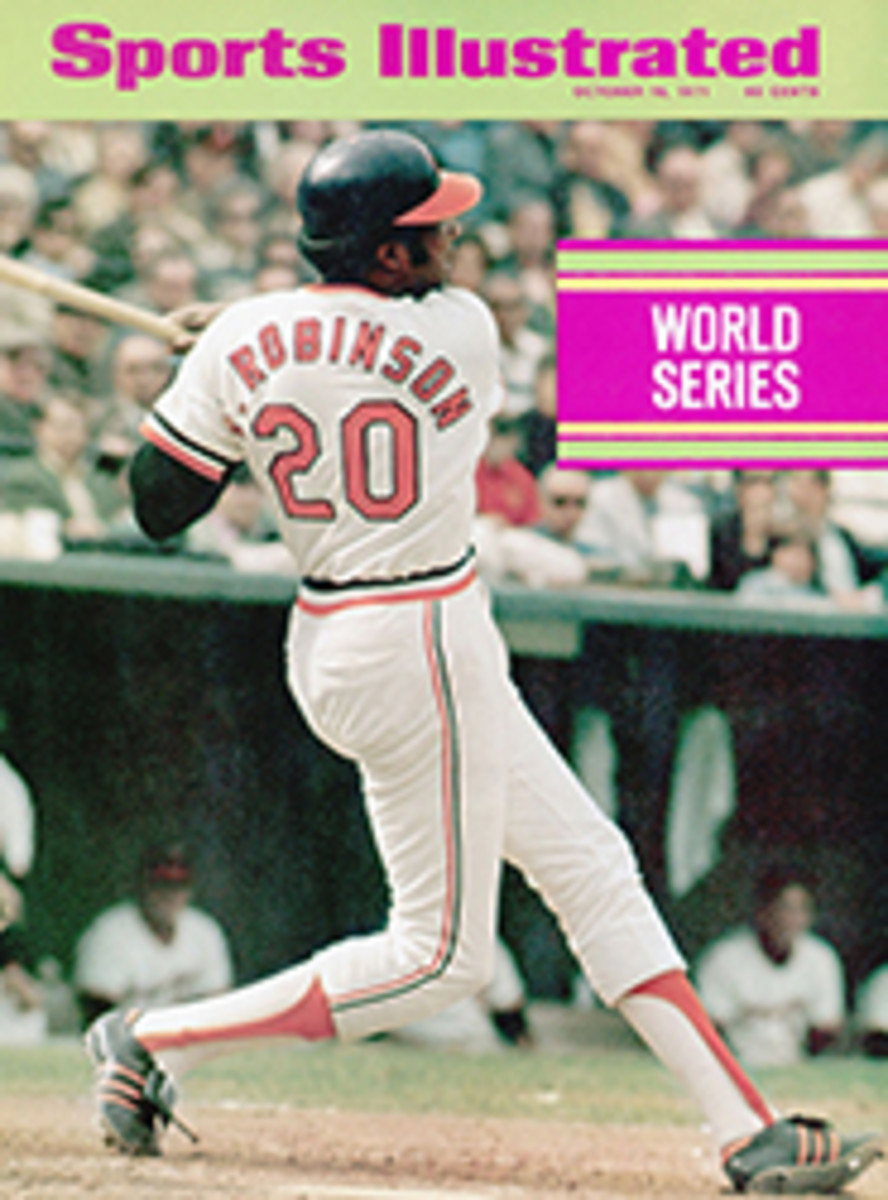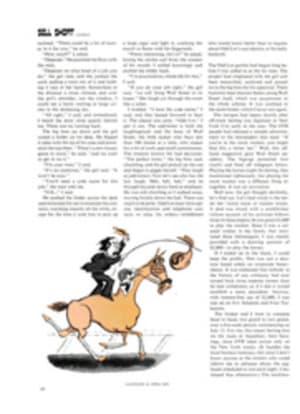
HE WAS MORE LIKE A REGIMENT
Stated simply, in the tennis record books, the result achieved at the Davis Cup Challenge Round in Charlotte, N.C. last week was that for the fourth consecutive year the U.S. had scored an emphatic victory, this time over Rumania. But seldom has a journey to the inevitable been so strewn with menacing entrapments. Until towering Stan Smith, the Army Pfc. who won the recent U.S. Open championship at Forest Hills with his big guns, beat Rumania's brooding, shaggy-haired Ion Tiriac 8-6, 6-3, 6-0 on Sunday and clinched the U.S. defense of the cup, the foregone conclusion was forced to survive an unfriendly playing surface, dark-horse candidates, untried youth, squelching rain and even the gloom of night. The events in Charlotte marked the last time the Davis Cup—now entering its eighth decade—will be held in its present king-of-the-castle format, but the old familiar shape went out with an ear-popping bang.
Next year the competition will take the form of a full-scale elimination tournament in which every Davis Cup nation, including the defender, will have to get in there and slug it out in the qualifying rounds for the right to play in the final. The new system may well succeed in ending the total domination that the U.S. and Australia have enjoyed in the Davis Cup matches since 1936—the last year in which somebody else (Great Britain, on that occasion) managed to win the Challenge Round.
But that is for next year. A few weeks ago the Rumanians, who lost to the U.S. 5-0 in the 1969 Challenge Round, suddenly had visions of themselves as being able to finally break this chain of Yank-Aussie successes. The reason was only partly due to the fact that Arthur Ashe and Bob Lutz—veterans of Davis Cup play—had become contract professionals and were therefore ineligible. It was chiefly because the U.S. Lawn Tennis Association, in what seemed to be an extraordinary sporting gesture, had chosen a venue where the playing surface would be clay—a substance as familiar to the Rumanians as a glass of Tsuiza—instead of the usual vigorously buffed cement that brings aid and comfort to the big serve, volley and smash game at which the Americans excel.
The court, made of blue-gray composition clay called Hartru, is in the Julian Clark Stadium, a $150,000 structure seating 6,200 spectators that must be rated just behind Forest Hills as one of the finest tennis tournament facilities in America. As U.S. Team Captain Ed Turville pointed out, the slower clay surface produces a totally different kind of game than that seen on fast grass or cement, one that creates longer rallies and a wider variety of shots. "There's no doubt that people would much rather watch tennis played on clay," said Turville, a fatherly, good-natured lawyer from St. Petersburg, Fla. "It's really the game at its best."
The Rumanian team, Tiriac and waifish Ilie Nastase, were more delighted at the choice of a clay surface than any spectator was likely to be. Clay is what they play on at home and around Europe and is what best suits their dogged ability to retrieve and their assortment of topspin drives, chops and lobs.
Nastase, Rumania's No. 1 player, was also pleased and surprised when Turville decided to enter Frank Froehling in the singles in place of Clark Graebner, who has beaten him in five of their six meetings. "Every time I walk out on a court with Graebner I am scared," he admitted. Froehling, 29 and once ranked No. 2 in the U.S., married in 1965, dropped out of big-time tennis and settled down behind a desk in Fort Lauderdale to work as a stockbroker. Now divorced, he got the itch to play full time again and has made a successful comeback this year, earning about $30,000 on the tennis circuit to date. Wearing a white tennis hat on his head that, along with his skinny 6'5" height, helped create the illusion of a white-feathered flamingo on the court, Froehling seemed to have reached a very high peak in practice, beating Graebner in eight of the 10 sets they played. So Turville picked him to help Smith.
The day before the announcement was officially made, Graebner, already apprised of this decision, sat in the stands watching the two Rumanians charge through their final hard practice session and assessed the situation.
"What they should hope for is that the draw puts Nastase up against Smith in the opening singles match," he said. "Nastase can beat Stan here, and if he does, it will be all over for us. Tiriac will be so charged up no one could stop him. You've also got to favor Tiriac and Nastase in the doubles for another point. But if Stan wins, it will probably go the other way. In fact, you could almost say that the entire Challenge Round would hinge on such a match."
Graebner's game may not have been sharp enough to earn a place in the starting lineup, but there was nothing wrong with his theory. Smith did meet Nastase in the opening singles; Smith beat Nastase, and the Rumanians never caught up. Nastase could not have been more thoroughly defeated had the match taken place on an ice-skating rink instead of the slow surface he is supposed to love. Smith shot home only one service ace (in the seventh game of the second set), but he charged to the net behind a spin serve that was kicking high to the Rumanian's backhand, and then earned a steady flow of winners with some deft volleying, quickly running off the first five games. But then Nastase bounced back to win the next five when Smith's first service suffered a brief lapse, and he froze the gangling American at the net with a string of zippy passing shots. Smith finally won the first set 7-5 after 47 minutes, breaking Nastase's serve when the Rumanian butchered three backhand volleys. After that, 47 minutes was all Smith needed to race through the two closing sets, which he won by scores of 6-3 and 6-1.
Tiriac, with a newly acquired black mustache, his mane of black curls, his massively sized head, his rounded shoulders, resembles something cut from a herd of bison. For a while in his first day's singles match against Froehling, it appeared that the bison was going to horribly gore the big white bird. In just under an hour he won the first two sets by 6-3 and 6-1.
"Frank was just extremely nervous, which happens to a lot of players in the Davis Cup," said U.S. Coach Dennis Ralston later. "He wasn't moving his feet, he had no bounce. He was shifting his shoulders to meet Tiriac's shots, but not his feet. That's a sure sign of nerves. There's nothing to do but play out of it." Which is precisely what Froehling did, playing out of it in one of the most dramatic comebacks in the 71-year history of the Davis Cup.
"He had been on the offense, me on the defense," said Froehling after the match. "So I started coming to the net to take the offense away from him."
He also kept Tiriac, who claims to be 32 but who has the weatherbeaten look of someone nearer 40, scurrying from one deep corner to another. Tiriac began to tire, and where his game had been nearly flawless in the first two sets, it now began to unravel like frayed catgut. Froehling won the third set 6-1, taking the set point with a neatly executed cross-court backhand chip volley.
Six service aces (he rolled up 16 in all) helped Froehling capture the fourth set, but the set-winning point was an extraordinary shot that jolted the first-day crowd of 5,000 to its feet, arms raised and shouting. Tiriac had taken command at the net and now, after a long rally, he leaped high to apparently smash away an overhead volley. Froehling, loping deep to his right, snaked out his racket and then whipped back a top-spin forehand that nosedived just beyond Tiriac's lunge. The momentum carried the American to a 5-2 lead in the fifth and final set, but with the sun now vanished below the pines and the air turned chilly he lost concentration. Tiriac broke Froehling's service in the ninth game, stalled by demanding on several occasions that Referee Harry Hop-man overrule linesmen's decisions, and with the score 6-6 and darkness closing in Hopman suspended play until the next day.
Froehling and Tiriac had fought for three hours and nine minutes to obtain this result, but it was all wrapped up in six minutes the following afternoon. Froehling held service, then broke Tiriac for the match by passing him at the net with a bulletlike forehand. So Froehling came through when he had to, but his final match—against Nastase—was both anti-climactic and a loser, 6-3, 6-1, 1-6, 6-4.
The U.S. doubles team of Smith and 20-year-old Erik Van Dillen lost on Saturday to Tiriac and Nastase, a pair that had been playing together for six years, finishing up just as a downpour drenched the area. It was only a temporary delay on the road to victory, however. Tiriac certainly seemed little cheered at the prospect of meeting Smith in singles on the next day.
Tiriac had a right to be apprehensive. After the sodden court had been fired by gasoline and fanned by helicopter to put it in shape on Sunday, Smith dominated the play. He closed out the match and gained the decisive third point with a delicate lob that floated just over Tiriac's head and squirted away to the rear wall. After all that had gone before, the end seemed effortless.
PHOTO
In opening match against Nastase, Smith played a forcing game, won in straight sets.

